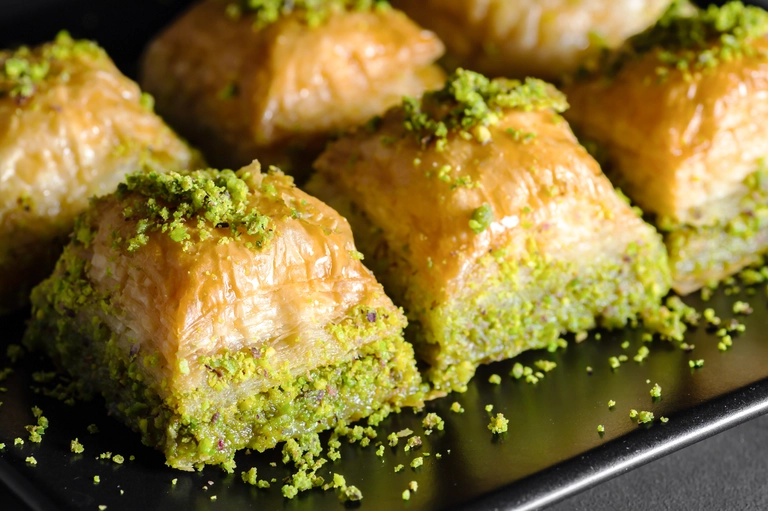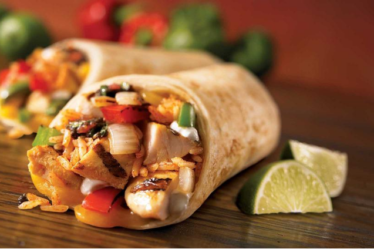
Baklava, a luscious and indulgent dessert, holds a special place in the hearts and palates of those who have had the pleasure of tasting it. This delectable pastry is a testament to the rich and diverse history of the culinary world, with roots that stretch across centuries and cultures. Baklava is not just a dessert; it is a culinary masterpiece that has transcended borders and delighted taste buds worldwide. In this article, we will delve into the history, preparation, and cultural significance of baklava dishes.
A Journey Through History
Baklava’s origins are somewhat disputed, with several countries claiming it as their own. However, most culinary historians trace its roots back to the Ottoman Empire, which once spanned much of southeastern Europe, western Asia, and northern Africa. The word “baklava” itself is believed to have been derived from the Mongolian word “bayla,” meaning “to tie” or “to wrap,” reflecting the intricate layering and preparation of this dessert. Check out this amazing Baklava recipe
Ingredients and Preparation
Baklava is known for its layers of flaky, buttery pastry dough, finely chopped nuts, and a sweet, aromatic syrup. The traditional recipe includes the following ingredients:
- Phyllo Dough: Thin sheets of unleavened dough, often brushed with melted butter or oil.
- Nuts: A mixture of walnuts, pistachios, or almonds, finely chopped and generously layered.
- Spices: Ground cinnamon, cloves, and sometimes cardamom or nutmeg for a hint of warmth and complexity.
- Sugar: Granulated sugar is commonly used to sweeten the nut mixture.
- Butter or Clarified Butter: Provides the essential richness and flakiness to the pastry.
The preparation of baklava is a labor-intensive process that requires precision and patience. Here is a simplified version of how it’s made:
- Layering: The phyllo dough is carefully laid out, one sheet at a time, in a baking dish or tray, with melted butter or oil brushed between each layer. This creates the distinct flaky texture.
- Nut Mixture: A generous layer of finely chopped nuts is spread evenly over the phyllo dough. This mixture is typically a combination of different nuts, lending various flavors and textures.
- Spices and Sugar: A sprinkle of ground spices and sugar is added to the nut layer, infusing the baklava with a fragrant and sweet aroma.
- More Layers: The layering process continues, with more phyllo sheets and butter or oil between each layer. This can range from several layers to dozens, depending on the recipe and desired thickness.
- Cutting and Baking: Once the layering is complete, the baklava is carefully cut into diamond or square shapes. It is then baked in a preheated oven until golden brown and crispy.
- Syrup: While still hot from the oven, a warm syrup, often made with sugar, water, and sometimes lemon juice or rosewater, is poured over the freshly baked baklava. This syrup is absorbed by the layers, creating a sweet and sticky delight.
- Cooling: Baklava is allowed to cool and rest, allowing the flavors to meld and the syrup to penetrate the layers fully.
Cultural Significance
Baklava is not just a dessert; it is a symbol of hospitality, celebration, and tradition in many cultures. It holds a special place on festive tables during holidays and special occasions. Here are a few ways baklava is celebrated across different regions:
- Greece: Baklava is a staple of Greek cuisine, often enjoyed during Christmas and Easter. It is also a popular treat at weddings and other celebrations.
- Turkey: Turkey is known for its rich baklava tradition, with various regional variations. It is commonly served during religious holidays like Eid and Ramadan.
- Middle East: Baklava is beloved in many Middle Eastern countries, where it is a common feature of family gatherings and holidays. Variations may include the use of rosewater or orange blossom water in the syrup.
- Balkan Region: In countries like Bulgaria and Serbia, baklava is a cherished dessert, especially during the Christmas season. It is often prepared with a combination of walnuts and honey.
- North Africa: In Morocco and Tunisia, baklava is enjoyed as a sweet treat during religious and social gatherings. It may have a unique twist, with the addition of orange or almond flavors.
Modern Innovations
While the classic baklava recipe continues to be celebrated, modern innovations have led to creative variations. Some chefs experiment with different nuts, such as cashews or macadamia nuts, while others introduce new flavors through ingredients like chocolate, caramel, or fruit preserves.
Additionally, baklava-inspired desserts and pastries have become popular, with baklava-flavored ice cream, cheesecake, and even baklava-inspired cocktails making appearances on menus worldwide.
Baklava is more than just a dessert; it is a testament to the enduring appeal of culinary traditions that have been passed down through generations. Its layers of history, culture, and flavor make it a sweet and timeless delight that continues to bring people together in celebration and appreciation of the culinary arts. Whether enjoyed in a bustling Istanbul cafe or homemade Baklava with love in a family kitchen, baklava’s allure remains undiminished, reminding us of the power of food to connect us across time and place. So, the next time you savor a piece of baklava, take a moment to appreciate the rich tapestry of flavors and history that this dessert represents.



